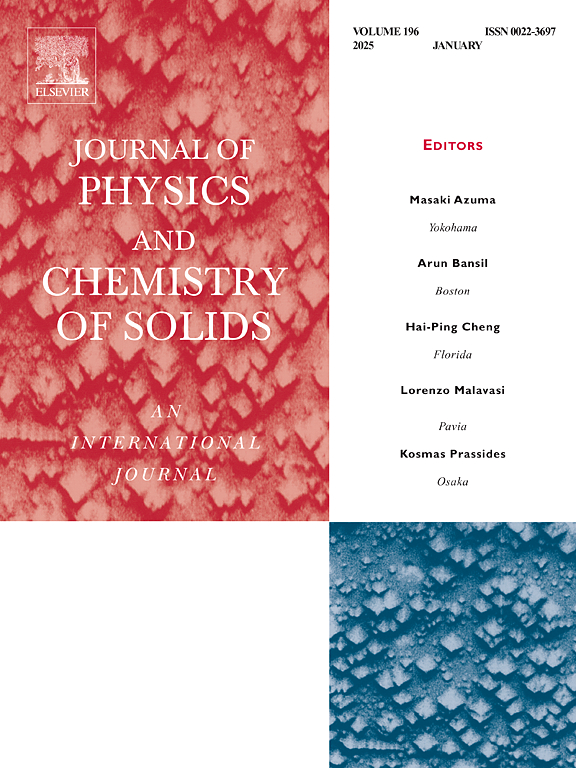Boosting hydrogen evolution with MoS2/Ti3C2Tx MXene-modified CdS: A Synergistic Approach to Visible-light Photocatalytic Water Splitting
IF 4.9
3区 材料科学
Q2 CHEMISTRY, MULTIDISCIPLINARY
引用次数: 0
Abstract
CdS/MoS2/Ti3C2Tx ternary composite photocatalyst with a unique nanorod structure was prepared by simple ultrasonication and wet impregnation method. The properties of the ternary composite photocatalyst are investigated via XRD, UV–vis, SEM, EDS, FTIR, BET, and PL spectroscopy. XRD analysis of the prepared photocatalyst using standard JCPDS card number indicates that they exhibit pure single phase without any impurity. Characteristics absorption bands of CdS, MoS2, Ti3C2Tx MXene were clearly observed in the FTIR spectra, further establishing the purity of the prepared photocatalyst. The CdS/MoS2/Ti3C2Tx heterostructure did not only effectively suppress the rate of recombination of photogenerated holes and electrons, but also provides more active sites, which enhances the photocatalytic hydrogen evolution reaction. The CdS/MoS2/Ti3C2Tx heterostructure with 4 wt% Ti3C2Tx loading has a maximum hydrogen production rate of 123520 μmol h−1 g−1, which is 20.5 times those of the pure CdS. The resulting composite maintains an elevated photocatalytic activity within 4 cycles of run.

MoS2/Ti3C2Tx mxene改性CdS促进析氢:可见光光催化水分解的协同方法
采用简单超声和湿浸渍法制备了具有独特纳米棒结构的CdS/MoS2/Ti3C2Tx三元复合光催化剂。通过XRD、UV-vis、SEM、EDS、FTIR、BET、PL等光谱对三元复合光催化剂的性能进行了研究。用标准JCPDS卡号对所制备的光催化剂进行XRD分析,结果表明所制备的光催化剂为纯单相,无杂质。在FTIR光谱中清晰地观察到CdS、MoS2、Ti3C2Tx MXene的特征吸收带,进一步确定了所制备光催化剂的纯度。CdS/MoS2/Ti3C2Tx异质结构不仅有效抑制了光生空穴和电子的复合速率,而且提供了更多的活性位点,从而增强了光催化析氢反应。当Ti3C2Tx掺量为4 wt%时,CdS/MoS2/Ti3C2Tx异质结构的产氢速率为123520 μmol h−1 g−1,是纯CdS的20.5倍。所得到的复合材料在4个循环内保持了较高的光催化活性。
本文章由计算机程序翻译,如有差异,请以英文原文为准。
求助全文
约1分钟内获得全文
求助全文
来源期刊
CiteScore
7.80
自引率
2.50%
发文量
605
审稿时长
40 days
期刊介绍:
The Journal of Physics and Chemistry of Solids is a well-established international medium for publication of archival research in condensed matter and materials sciences. Areas of interest broadly include experimental and theoretical research on electronic, magnetic, spectroscopic and structural properties as well as the statistical mechanics and thermodynamics of materials. The focus is on gaining physical and chemical insight into the properties and potential applications of condensed matter systems.
Within the broad scope of the journal, beyond regular contributions, the editors have identified submissions in the following areas of physics and chemistry of solids to be of special current interest to the journal:
Low-dimensional systems
Exotic states of quantum electron matter including topological phases
Energy conversion and storage
Interfaces, nanoparticles and catalysts.

 求助内容:
求助内容: 应助结果提醒方式:
应助结果提醒方式:


